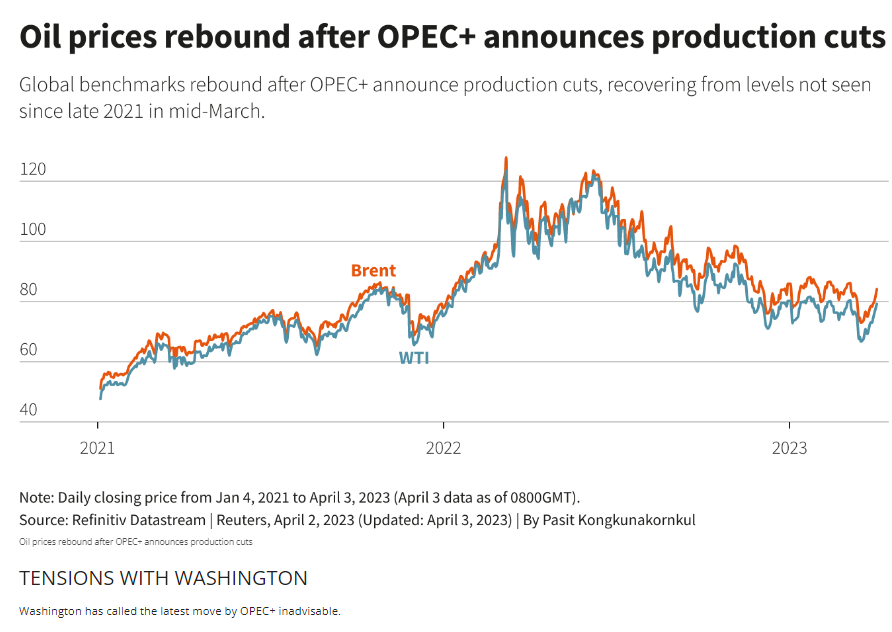1
LONDON, April 3 (Reuters) – OPEC and its allies, including Russia, agreed on Sunday to widen crude oil production cuts to 3.66 million barrels per day (bpd) or 3.7% of global demand.
The surprise announcement helped push up prices by $5 per barrel to above $85 per barrel.
Here are the main reasons why OPEC+ is cutting output:
CONCERNS ABOUT WEAK GLOBAL DEMAND
Saudi Arabia has said voluntary output cuts of 1.66 million bpd on top of the existing 2 million bpd cuts were made as a precautionary measure aimed at supporting market stability.
Russian deputy prime minister Alexander Novak said the Western banking crisis was one of the reasons behind the cut as well as “interference with market dynamics”, a Russian expression to describe a Western price cap on Russian oil.
Fears of a fresh banking crisis over the past month have led investors to sell out of risk assets such as commodities with oil prices falling to near $70 per barrel from near an all-time high of $139 in March 2022.
A global recession could lead to lower oil prices. Redburn research said the size of the latest cut was probably overdone unless OPEC feared a major global recession.
PUNISHING SPECULATORS
The cut will also punish oil short sellers or those who bet on oil price declines.
Back in 2020, Saudi Energy Minister Prince Abdulaziz bin Salman warned traders against betting heavily in the oil market, saying he would try to make the market jumpy and promising that those who gamble on the oil price would be “ouching like hell”.
Prior to the latest cut, hedge funds had reduced their net position in U.S. benchmark WTI oil to just 56 million barrels by March 21, the lowest since February 2016.
Their bullish long positions outnumbered bearish short ones by a ratio of just 1.39:1, the lowest since August 2016.
“The latest cut would hurt those who bet against oil really badly,” said a source familiar with OPEC+ thinking.
 iMetal
iMetal
